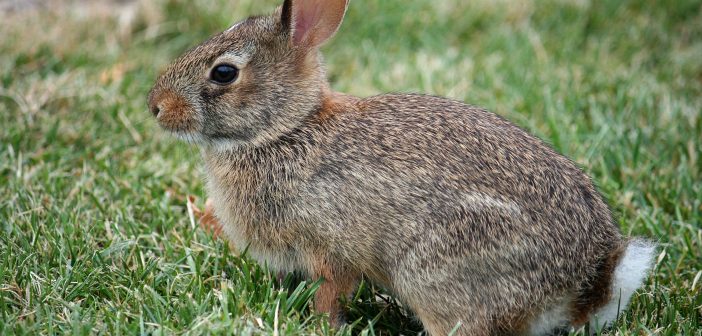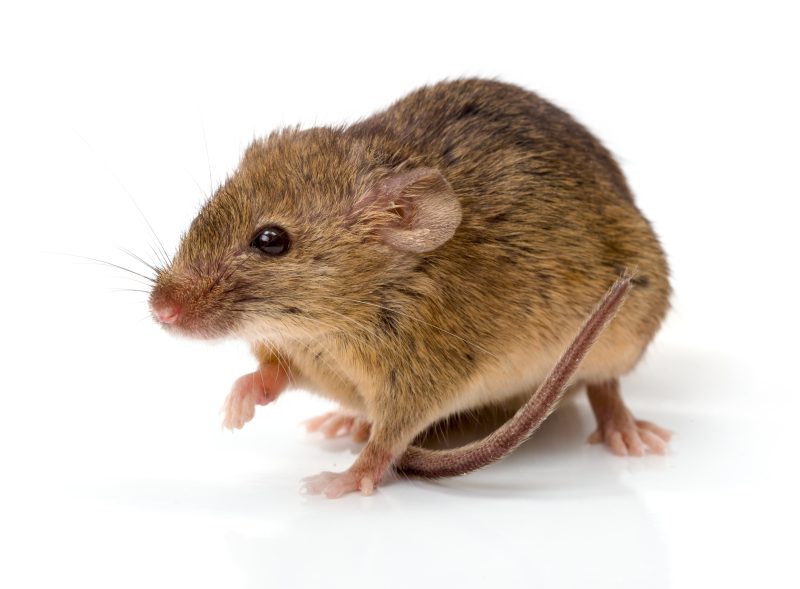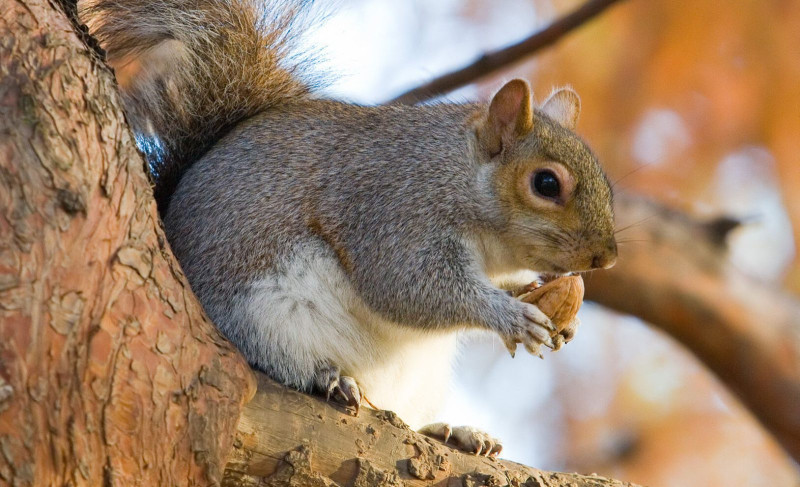Caring for orphaned bunny
It’s very hard to save an orphaned rabbit. There are many reasons why, but the most common is the failure to feed them cecotropes (SEE-ko-tropes). Rabbits produce two kinds of droppings: round, dry pellets and cecotropes. The first is regular poo, but cecotropes are special. They’re produced by the cecum, a pouch located between the small and large intestines. The cecum separates digestible material from the indigestible fibrous parts of the plant foods they eat. Cecotropes, the good stuff, are packed full of minerals, vitamins, proteins, beneficial bacteria and digestive flora. Rabbits don’t let this go to waste; they eat it.
Baby rabbits can’t produce cecotropes at first, but need them to jump-start their digestive system when they switch from milk to solid foods. Without cecotropes, they don’t have the gut flora necessary to digest foods properly, and they die a painful death. They eat their mother’s to get started, then switch to their own. It’s important to get the bunny to a licensed wildlife rehabilitator as soon as possible, where it will have the best chance of survival.
Is a rabbit the same as a hare?
No. The most noticeable distinctions between them are that hares are larger, with longer back legs and longer ears. Hares are also born with fur, their eyes are open, and they’re partially mobile (called precocial). Rabbits are born hairless and helpless (altricial).
Caring for an injured rabbit
If you must pick up a rabbit, never lift it by its ears; it’s painful and injurious. Rabbits don’t like being handled — even newborns will struggle against it. But be gentle and hold it firmly to keep it from thrashing about. They have a very fragile spine, easily broken. Take the rabbit to a licensed wildlife rehabilitator. Or to a veterinarian if it’s in a hopeless condition. Sometimes vets that don’t take care of wild animals will still euthanize them as a humane thing to do.
I found orphaned bunnies
They probably aren’t orphans and don’t need help if they’re still in their nest. Cottontail mothers leave their babies alone in their nest (a 6-inch [15 cm], softly lined hole) except when nursing them. This occurs only at dawn and dusk, and after feeding them, she covers the nest with grasses to hide it. So, it’s best to admire the little guys, cover them back up with a thin sprinkle of grasses, and leave Mum to watch over them. She usually stays nearby, and you might spot her if you look around.
If you come across baby rabbits that you know with certainty need human help—they’re cold to the touch, covered with parasites, or weak—keep them warm and take them to a licensed wildlife rehabilitator immediately. (Please be sure to get an agreement from the rehabilitator that the rabbits will not be used for food for other critters in his or her care, which sometimes happens.)
If you try to raise them yourself, you’re dooming them to almost-certain, painful death. Baby rabbits are very fragile and don’t tolerate handling by humans very well. Also, they require a specialized diet that includes immune system-building bacteria they get only from their mother. And lastly, they’re prone to quickly dying from irreversible shock or stomach problems.
If you come across bunnies whose nest has been destroyed, perhaps by a lawnmower, simply rebuild the nest from grasses and whatever you can find of the mother’s fur and cover it up with a light layer of grasses or leaf litter. If the nest can’t be rebuilt in that same hole for some reason, build a nest as close as possible to it. Place the babies close together to keep them warm. The mother will hopefully find them. She won’t abandon the babies if she smells human scent.
You can monitor whether baby rabbits are being attended to by laying a string or a couple of small sticks in an X pattern on top of the nest covering. If it’s disturbed the next morning, you’ll know the mother has been there. Don’t hang around to watch. The mother won’t feed her babies if she knows you’re there. Even if you don’t see her, she sees you.
How do I get a rabbit out of my window well?
If the rabbit is an adult, throw a blanket over it, enter the well, scoop it up in the blanket, and place it in a box or bucket. You might want to wear thick gloves—rabbits will bite, and they have very sharp teeth. They also have a powerful kick. Once topside, just gently pull the blanket away from it. If it doesn’t jump immediately out of a bucket, just turn it on its side or even gently empty it out.
For a juvenile, wear leather gloves and scoop it up. If it won’t stand still for you to do this, cover it with a towel or blanket and scoop it up.
Learn All about the Eastern Cottontail Rabbit





